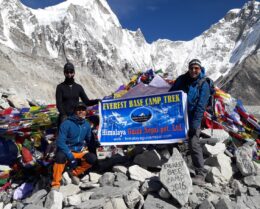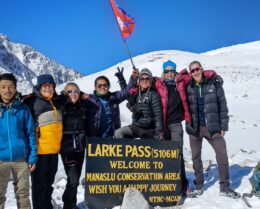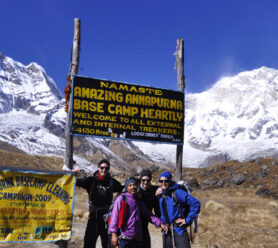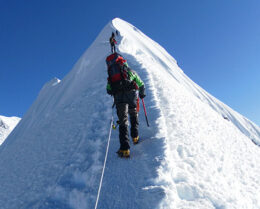Best Places to Visit in Koshi Province: Kanchenjunga Base Camp Trek
UPDATED ON 2 July, 2025
One of Nepal’s seven federal provinces is Koshi Province. It was created in 2015 by Nepal’s current constitution. At first, it was known as Province No. 1. It was renamed after the Kosi River on March 1, 2023. Biratnagar city serves as the capital. The province is bounded to the north by Tibet in China, to the east by the Indian states of West Bengal and Sikkim, to the south by Bihar, and to the west by Bagmati and Madhesh provinces. The province has about 5 million residents, or 190 persons per square kilometer, according to the 2021 Nepal census. The province’s population was estimated to be 4.5 million in the 2011 Nepal census. Similarly, here in this article, we will discuss the Best places to visit in Koshi Province.
Lists of Some Best Places to Visit in Koshi Province
Kanchenjunga Base Camp Trek – The best places to visit in Koshi Province according to Mountain Views

For those who love adventure, trekking to the stunning Kanchenjunga Base Camp is a dream come true. Situated in the eastern Himalayas, this area presents beautiful vistas of the mountains and the opportunity to fully engage with Nepal’s rich cultural legacy. Nonetheless, picking the ideal time for your hike is essential to guaranteeing a secure and entertaining trip.
Trekking in the Kanchenjunga region of Nepal is a demanding and fulfilling experience. Moreover, We go through a variety of environments, including the high Himalayan alpine zone and rice paddies. And experience elevations from 91 and 5,800 meters, fully engrossed in the breathtaking splendor of the surroundings.
We stay a long time in the upper Himalayan valleys, erecting our camps in scenic spots, so that we may truly enjoy their charms. Beautiful camping areas with expansive views of hills, mountains, and valleys may be found at Cheram and Ramche. Often missed by other hikers, Chhuchung Pokhari offers a tranquil location to see spectacular sunrises and sunsets over the Simhalila Danda.
Ghunsa, a thriving Buddhist community tucked away at the foot of Ghunsa Khola Valley, greets us as we cross into the North Valley. We arrive at Kambachen by traveling further alongside the Kanchenjunga Glacier and Ghunsa Khola.
Nestled at the foot of Mount Janu Himal is a stunning valley. Our adventure takes us to the 4,780-meter-high Lhonak. And lastly, to the 5,143-meter-high Kanchenjunga North Base Camp (Pang Pema).
Furthermore, trekking at the Kanchenjunga Base Camp provides an opportunity to escape the stresses of everyday life in addition to beautiful scenery. The clean mountain air of the trip lifts our spirits, making it a genuinely transformative Himalayan adventure.
Makalu National Park
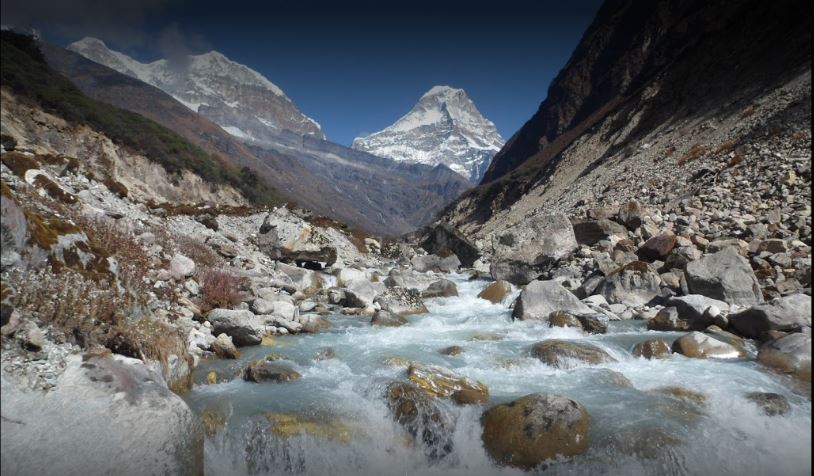
Situated in the districts of Sankhuwasabha and Solukhumbu, the park and conservation area is bounded to the east by the Arun River, to the west by Sagarmatha (Mt. Everest) National Park, to the north by the Nepal-Tibet border, and to the south by the Saune Danda (ridge). It is 2,330 square kilometers in size.
As a Strict Nature Reserve, this is the only protected area in Nepal. Some of Nepal’s most distinctive and abundant areas of flora and fauna can be found there; these areas have been lost to the country’s expanding population. Ascending the slopes are a range of vegetation zones, ranging from subtropical schima-castanopsis forest at an elevation of 1,000–2,000m to tropical sal forest below 1,000 m.
The sub-alpine region (3,000–4,000 m) is home to fir, birch, and rhododendron forests, while the alpine pass trues (4,000–5,000 m) are home to herbs, grasses, and rhododendron/juniper shrubs.
There are 48 species of primrose, 86 kinds of fodder trees, 15 oaks (including Arkhoulo), 67 species of bamboo, and 47 varieties of orchids. In the Makalu-Barun region, more than 400 different kinds of birds have been sighted, including two that have never been seen in Nepal before the olive ground warbler and the spotted wren-babbler.
In addition to more sizable populations of Ghoral, thar, wild boar, barking deer, Himalayan marmot and weasel, common langur monkey, and the serow, the wildlife includes the endangered red panda, musk deer, Himalayan black bear, clouded leopard, and potentially snow leopard. There are 84 different species of fish in the Arun River system.
Kanchenjunga Expedition
Climbing Kanchenjunga is a challenging expedition that begins in Nepal’s east at an elevation of 8586 meters. Kanchenjunga, or the “five treasures of the high snow,” has a deeper connotation. Three British foreigners discovered and explored the Kanchenjunga peak in 1848 and 1849.
The British group Joe Brown and George Band achieved the summit’s first success in 1956. In 1973, 1974, and 1976, the Japanese squad also made their way up Yalung Kang.
There are four peaks, including Yalung Kang, the West Summit, and another notable 8,000-meter mountain. A growing number of hikers are becoming interested in this trip due to its unspoiled beauty, mystique, and appeal.
You may see the well-known view of Tiger Hill in Darjeeling from this trek. Along the walk, you will pass the Kanchenjunga conservation area project and get a close-up look at the well-known red panda.
Khangchendzonga National Park is a protected park area located on the Indian side of Kanchenjunga. Kanchenjunga is known as Sewalungma in the Kirant language, which means “we greet the mountain.”
Furthermore, this is a hard and challenging climb that involves rock and ice obstacles from the North Col route upward. The Kanchenjunga Expedition’s North Col segment is weather-open. Views of the breathtaking higher-peak mountains may be seen from both sides of the base camp.
Although it involves tough climbing, the standard route via North Col and North Face is safe. A skilled climber should choose it because of its delightful technical portion. From the Base Camp, which offers breathtaking views of Kanchenjunga I, Kangchenjunga II, and Kang Bachen, the panorama is breathtaking.
For the climber, the ascent is both difficult and fascinating. Sherpas with climbing experience will be able to assist with using the fixed rope route while wearing safety gear.
Mera Peak Climbing
One of the well-known summits in the Himalayas for novice climbers is Mera Peak Climbing. At 6,476 meters above sea level, Mera Peak is Nepal’s highest trekking peak.
Climbing Mera Peak is an amazing experience because of the non-technical climbing path. The thrilling path that passes through isolated communities to reach the Mera Base Camp, and the rich cultural legacy of the residents.
Jimmy Roberts and Sen Tenzing made the first ascent of Mera Peak in 1953. The peak has three summits: 6,476-meter-high Mera North, 6,461-meter-high Mera Central, and 6,065-meter-high Mera South. Furthermore, Mera Peak’s precise coordinates are east 86° 54 ’40’ ‘ and north 27° 46’ 27″. Mera Peak Climbing is classified as alpine PD according to the mountain standard.
The route to the summit of Mera Peak is physically demanding and involves a walk on the dense snow-covered path. Therefore, the climbers have to be physically and mentally fit. If you love adventure and challenges, are willing to test your endurance, and open a new level of thrill in your life, then Mera Peak Climbing 2023 is the ultimate venture for you.
Highlights of Mera Peak Climbing
Hiking in breathtaking and secluded settings: The route to Mera Peak Base Camp passes through the secluded and picturesque Hinku Valley. It offers breathtaking views of the Himalayas, verdant woods, and traditional Sherpa settlements. It is the Best Place to Visit in Koshi Province according to Mera Peak Climbing mountains.
Climbing to a high height: Reaching 6,476 meters (21,247 feet) above sea level, Mera Peak offers a high-altitude mountaineering excursion. Climbers might enjoy a distinctive and difficult experience from this.
Similarly, Climbers can experience breathtaking views of the Himalayan mountain range, which includes Everest, Lhotse, Makalu, and Kanchenjunga, from the summit of Mera Peak.
Immersion in Sherpa culture: You can learn about Sherpa customs and culture by walking through traditional Sherpa villages on the way to Mera Peak Base Camp.
Overcoming obstacles both mentally and physically: Climbing Mera Peak demands mountaineering expertise, mental fortitude, and physical fitness. Overcoming these obstacles can be a fulfilling experience that promotes personal development.
Koshi Tappu Wildlife Reserve – Best Places to Visit in Koshi Province Based on Reserve

The Koshi Tappu Wildlife Reserve in the districts of Sunsari, Saptari, and Udayapur safeguards 175 km2 (68 sq mi) of wetlands in the Terai area of eastern Nepal. Situated on the Saptakoshi River’s floodplain, it is made up of large freshwater marshes, reed beds, and mudflats. Its elevation varies from 246 to 266 feet, or 75 to 81 meters. It was first launched in 1976.
An interview survey was conducted in the Paschim Kasuha VDC on the east side of the reserve between 1997 and 1998 to ascertain the intensity of the conflict between park visitors and locals. The study found that water buffalo and wild boar were the primary crop intruders between September and February.
Numerous cattle were seen grazing unrestrictedly within the area. Locals are the ones who poach, consume forest goods illegally, and fish in the reserve.
There are 31 species of animals known to science, including the smooth-coated otter, golden jackal, wild boar, spotted deer, and hog deer in addition to the Asian elephant. The Ganges river dolphin has been seen in the Koshi River. Blue bull and gaur populations have declined. The remaining 150 wild water buffalo in Nepal reside in this area.
According to the results of the most current census, which was carried out in 2016, there are now 432 people living there, representing an annual growth rate of 7.27%. As a result of this population increase, authorities are thinking of relocating some Wildwater buffaloes to the flood plains of Chitwan National Park, where they were eradicated in the 1950s.
Pathivara- Best Places to Visit in Koshi Province Based on Religion
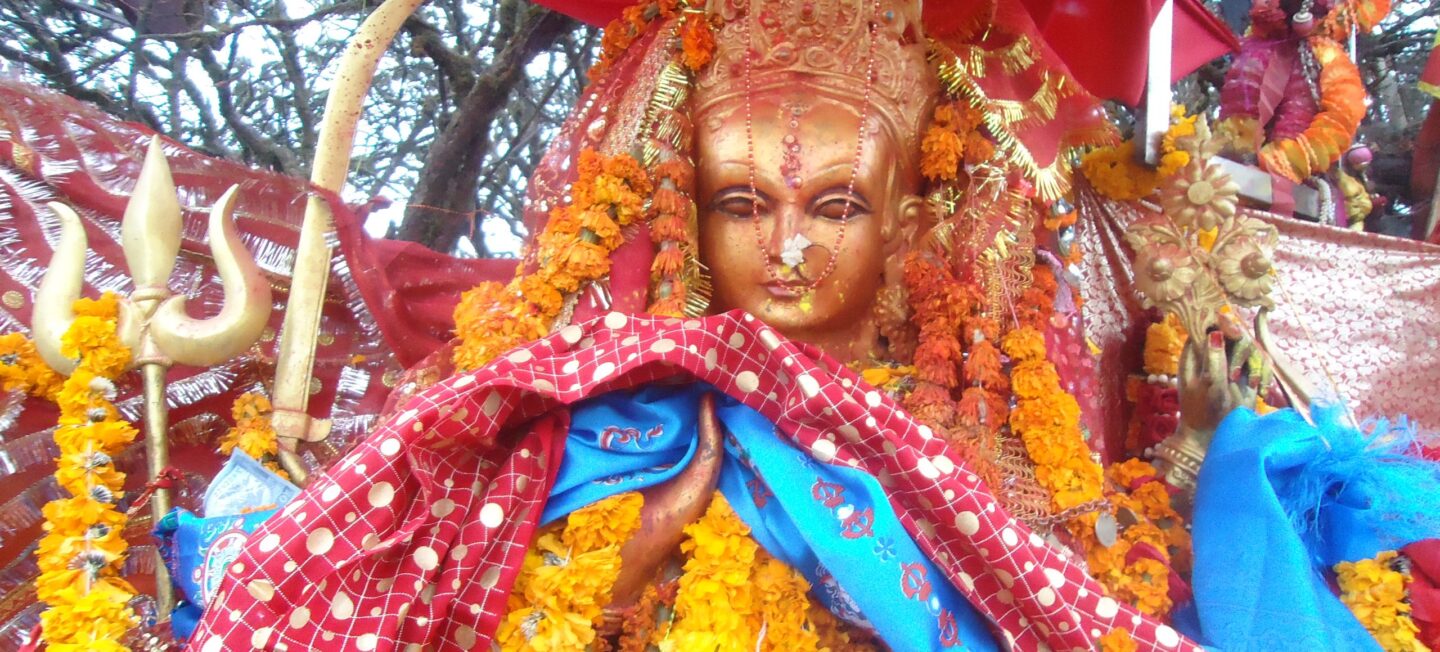
Pathivara temple, a temple of the goddess Pathivara is situated in the top eastern part of Nepal. The temple lies in the Taplejung district at an elevation of 3,750 meters. The animist deity at Pathivara is worshiped with equal reverence by both Hindus and Buddhists.
The Goddess at Pathibhara is believed to fulfill the long-cherished dreams of her devotees, like sons for those without sons, and wealth for the poor.
Pathivara Devi is considered one of the ‘Shakti Peeths’. Worshippers from different parts of Nepal and India flock to the temple during special occasions, as it is believed that a pilgrimage to the temple ensures fulfillment of all that the pilgrim desires.
The devotees of Pathibhara also include members of the Royal family from Nepal. The pilgrims sacrifice animals and bring gold and silver as offerings to the Pathibhara Devi.
Kanyam Tea Garden
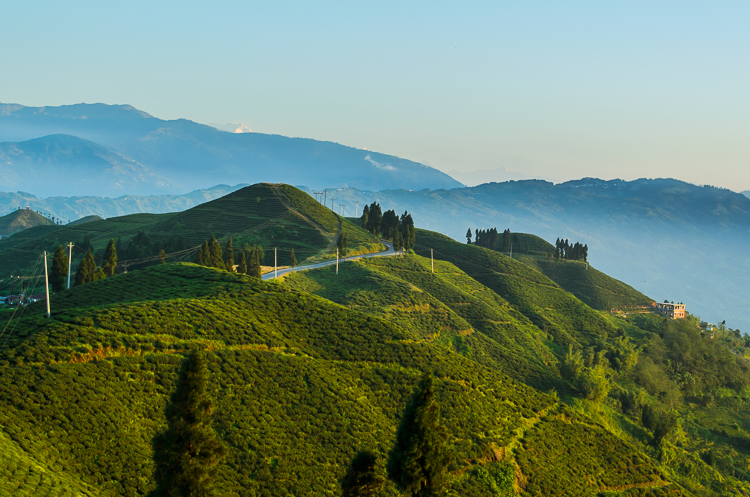
Kanyam Tea Garden is located in the eastern region of Nepal, in the Suryodaya Municipality of the Illam district. At 6,000 feet above sea level. There are about 240 hectares in total, of which 200 hectares are used for tea planting and produces about 125 thousand kg of tea.
Along with the amazing, fresh air, there are hills that curve covered with tea gardens and verdant hillsides blooming with agricultural produce. Amazing panoramas of Mt. Kanchanjanga. Also, the other Terai locations, such as Jhapa, Darjeeling, Siliguri, and Mirik, as well as sunrise and sunset vistas are all available.
Shree Antu Danda, Illam

It is located in the eastern region of Nepal, in the Ilam district, at a height of around 1,977 meters above sea level. It is popular for its breathtaking sunset viewpoints, which are framed by the Eastern Himalayan Mountain Range.
The plain Terai landscape in the south, the pine tree forests in the north, and the tea-growing regions of Darjeeling in the east. The breathtaking vistas of the eastern Himalayas in the north can all be seen and enjoyed from this hill.
Conclusion
Province No. 1 is home to well-known Hindu holy sites such as Baraha Chhetra, Pathivara Temple, and Halesi Mahadev Temple. So, you can have a wonderful time here in this region of Nepal.
Some Similar posts


